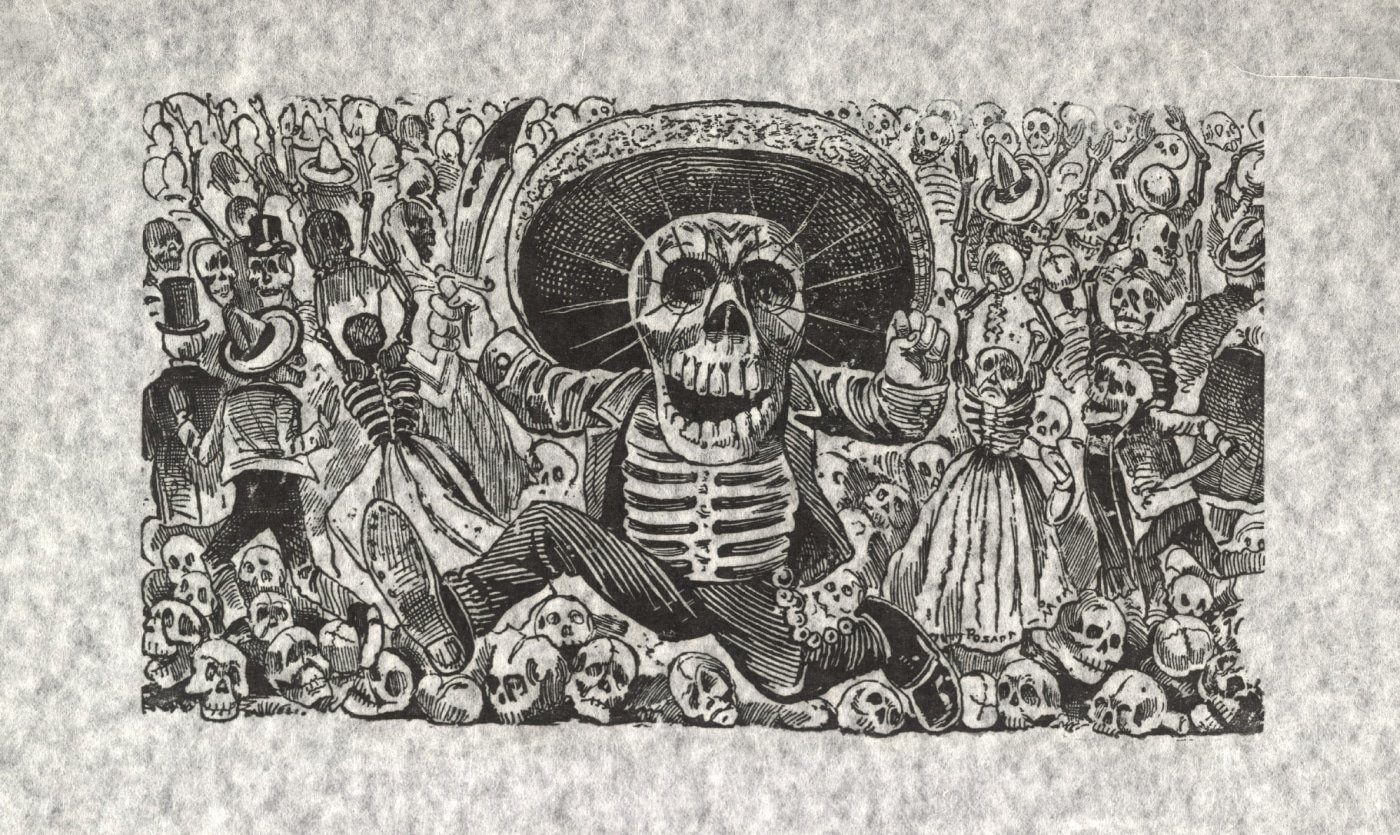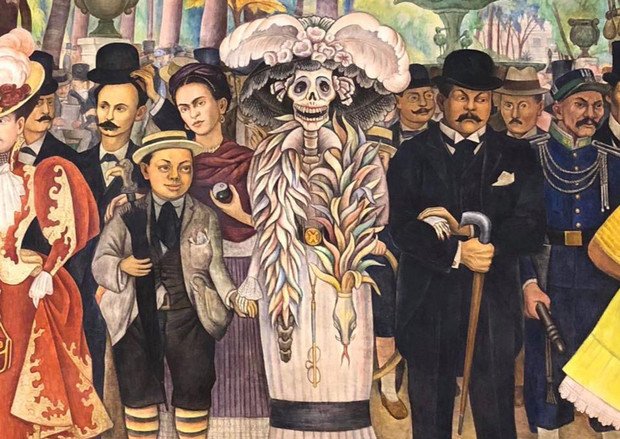
La Catrina
The Day of the Dead, or Día de Muertos,is perhaps one of the most well-known and important traditions in Mexico. It’s a vibrant celebration filled with colors, fragrances, and flowers, and it’s so internationally recognized that it has been declared “Intangible Cultural Heritage” by UNESCO. One of the most iconic symbols of this celebration is “La Catrina.” But do you know the story behind it?
A very special time for all Mexicans, eagerly awaited as a visit from their beloved ones, is the Day of the Dead. This celebration comes to life with elements like “pan de muerto” (bread of the dead), marigold flowers, “papel picado” (cut paper), sugar skulls, and, undoubtedly, “La Catrina.”
La Catrina is one of the most iconic figures in Mexican culture, not just on the Day of the Dead. The origin of this emblematic character can be traced back to the discontent of the Mexican people regarding the privileged classes.
What Is La Catrina?
La Catrina, whose original name was also “La Calavera Garbancera,” is a figure of a skeleton woman who wears a large, French-style hat on her skull. She is the Mexican representation of death.
What is the origin of La Catrina?
This character was created by the painter, illustrator, and caricaturist, José Guadalupe Posada. She made her first appearance in 1912.
Her original name was “La Calavera Garbancera” because the illustrator created her to satirically represent the garbanzo (chickpea) sellers of the Porfirian era. During that time, the term “garbancera” referred to people of indigenous heritage who had switched from selling corn to selling garbanzos.
La Catrina emerged as a criticism of the classism in Mexican society because these people pretended to be European, Spanish, or French and renounced their own race, heritage, and culture.
From that moment, the illustrator used skulls and skeletons to accompany his satirical writings on politics, religion, and everyday life in Mexico. His most famous quote, “Todos somos calaveras” (We are all skeletons in the end), stems from the idea that deep down, we are all the same, regardless of how we dress or groom ourselves to appear more attractive or important. Another of his notable phrases is, “La muerte es democrática, ya que, a fin de cuentas, güera, morena, rica o pobre, toda la gente acaba siendo calavera” (Death is democratic because, in the end, fair-skinned, dark-skinned, rich, or poor, everyone ends up as a skeleton).
The original La Catrina
The original version of La Catrina is a metal engraving that the artist depicted from the shoulders up, without clothing or makeup, only wearing the French hat with feathers. This hat has been interpreted as a critique of the poverty that the majority of Mexicans lived in at that time. You can see this image on the cover of this article.
In 1947, the Mexican muralist Diego Rivera added the elegant and distinctive attire that is now associated with her when he painted her in the famous mural “Sueño de una tarde dominical en la Alameda Central” (Dream of a Sunday Afternoon in the Alameda Central). La Catrina is prominently featured in the foreground alongside José Guadalupe Posada.

The term “catrín” defined those elegant and well-dressed men who accompanied ladies with similar characteristics. The word took on the meaning of a “man of very comfortable means, with a lot of money and fine clothing.” This style was a classic image of the aristocracy in the late 19th and early 20th centuries, during the Porfiriato era. This period was characterized by significant social inequalities.
When Rivera gave her this attire, “La Calavera Garbancera” became “La Catrina.”
His mural also summarizes the history of Mexico. It represents periods such as “the Spanish Conquest,” “the country’s Independence,” “the Mexican Revolution,” and “peasant struggles.” The mural includes politicians and prominent figures such as José Guadalupe Posada, La Catrina, Frida Kahlo, and Diego Rivera.
Today, it can be found at the Diego Rivera Mural Museum, located in the Historic Center of Mexico City.
Why is she a part of the Day of the Dead?
From the moment both artists made her part of the collective imagination, “La Catrina” began to be part of the nationalist discourse of the 20th century. Research by the Institute of Anthropological Research at UNAM determined that they “highlighted the beliefs of the past about the underworld, skulls, and offerings.” With her, ancient traditions and rituals were revived that hadn’t been practiced since pre-Hispanic times, primarily with the Aztecs.
Today, she is part of Day of the Dead commemorations, serving as a symbol of death. Colorful skeletons in various outfits adorn public and private spaces.
“La Catrina” has become a popular phenomenon and inspired admirers worldwide to create their own figures of her using various materials.

